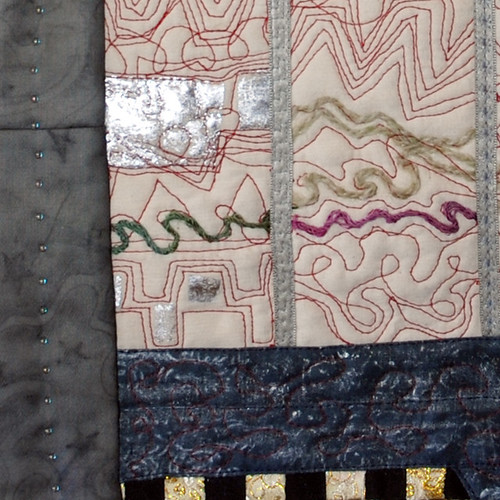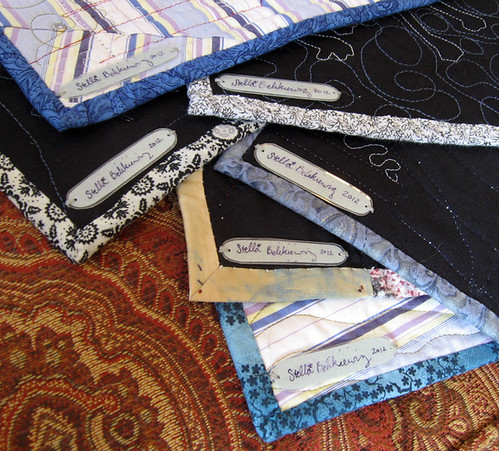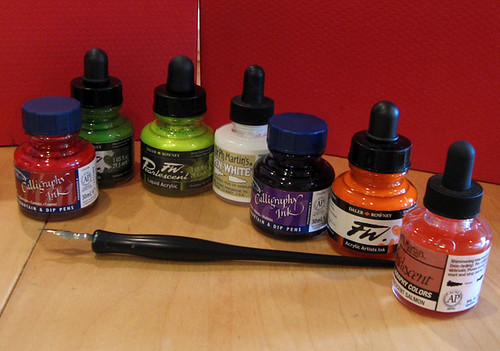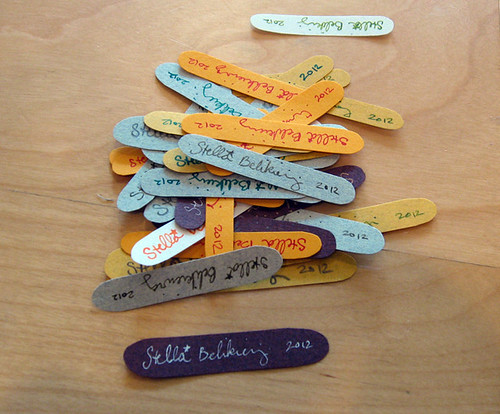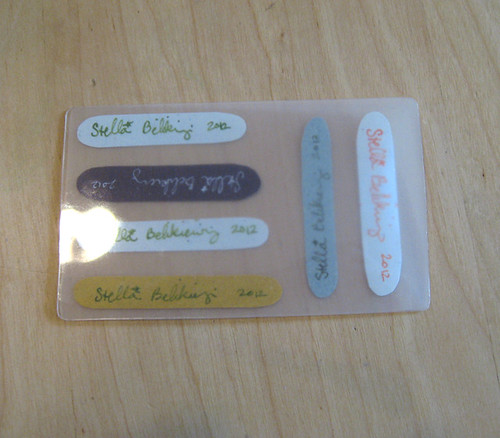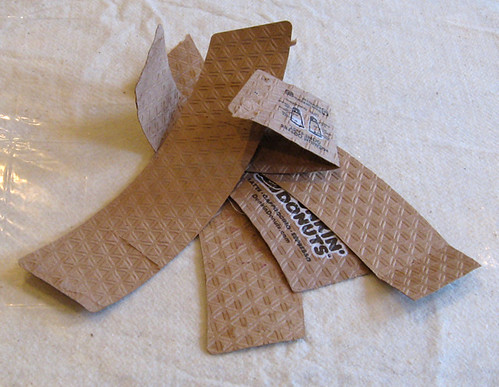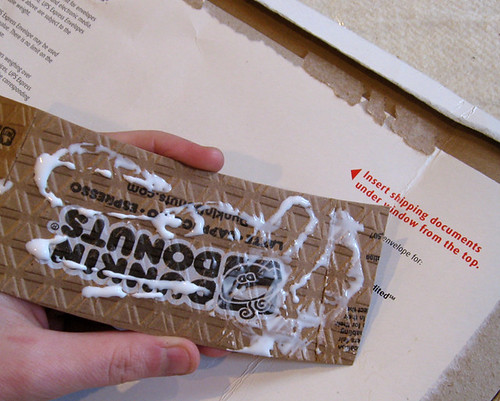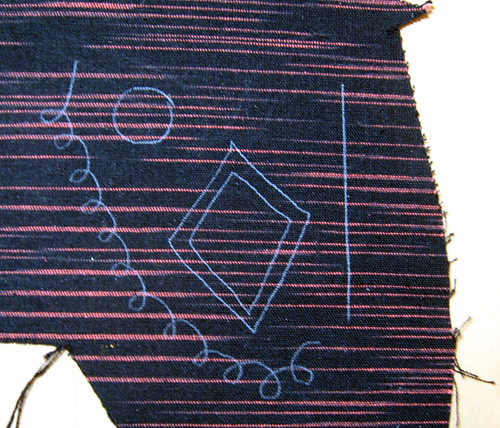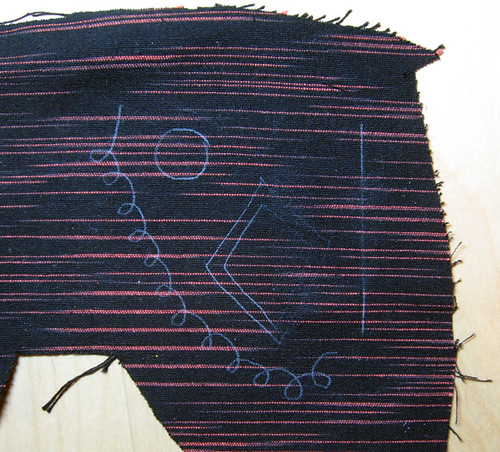I recently acquired a new Bernina, and with this machine came an organizational challenge I've never had to face with my little Pfaff Hobby 1030. With my Pfaff, all the accessories and feet that came with it can fit into the slide-on accessory bin that slides onto the machine and doubles as a sewing surface. Since I've only acquired one extra foot for that machine, the built in storage has always been perfectly adequate.
Whole different story with my Bernina 530! Between the feet it came with, the ones I ordered when I purchased the machine, the various tools, needles and accessories, AND the feet I'm sure I'll keep impulse purchasing as time goes on, there was NO WAY the lame storage box that came with the machine would ever meet my needs. Below is
the box I ended up buying to hold all the stuff, after spending an extremely enjoyable hour and a half at the Container Store, trying to put sewing machine feet into every box in there while chatting with a nice young man who seemed to share my enthusiasm for changeable compartments.
 |
| My exciting new Bernina accessory storage solution |
This is the accessory box that came with the machine. Very attractive, but in the end the thing is not well designed AT ALL!
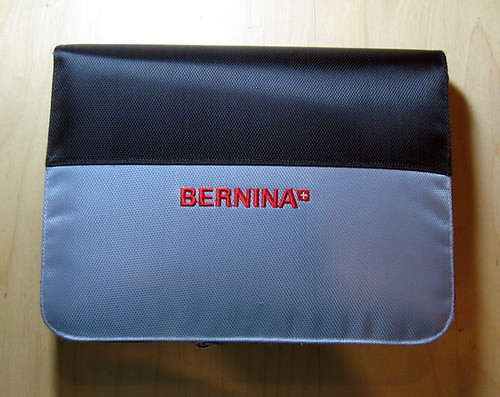 |
| Very stylish, too bad it doesn't do its job! |
Here are the problems with the Bernina accessory storage box:
- It does not have enough little compartments to hold nearly the number of feet I'll eventually own!
- When you zip it closed and take it somewhere, the feet and other accessories get all mixed up together because the box is not capable of keeping each item in its place.
- The little foot-compartments are nearly all the same size, and one of the feet that came with the machine didn't even have a place it could fit comfortably. The only foot that has a truly perfect little cubby of its own is the automatic buttonhole foot (as we'll see later in the post, that one actually gave me a bit of a challenge when creating the new system!)
- All the non-feet accessories just have to be piled together in one L-shaped compartment and it's annoying to dig through there looking for the one thing you need.
- As if all that weren't enough, the accessory box is flocked on the inside, and continually sheds fine black fibers onto everything inside it.
 |
| The accessory box's interior after being carried around in my bag. |
Here's how beautiful everything looks now:
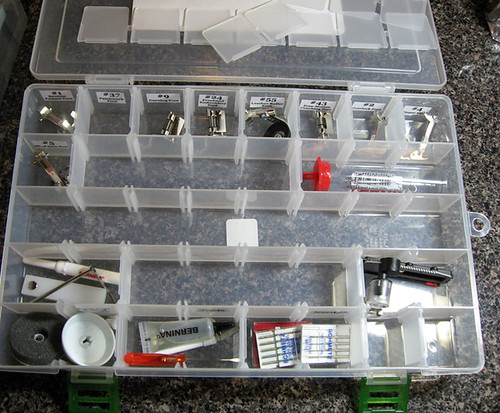 |
| A perfectly sized place for everything, plus tons of room to grow! |
I wanted each foot to be super easy to spot at a glance, so I printed individual labels from my computer and affixed them with packing tape. My label maker is away from home at the moment, and plus these labels look extremely cute!
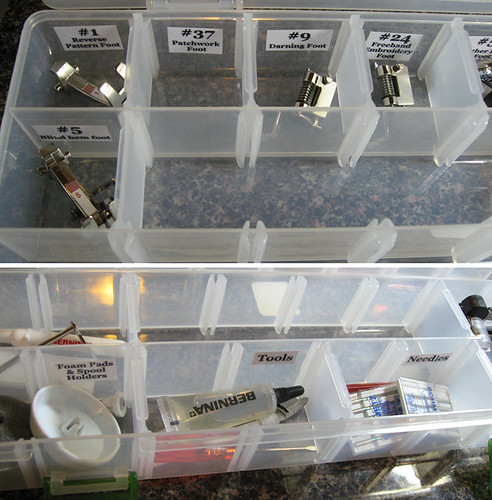 |
| Everything neatly labeled and easy to find. |
I decided bobbins didn't need to be factored into my container choice, since I already have a perfect way to store them:
 |
| These rubber doughnut shaped rings are absolutely my favorite bobbin storage solution! |
Everything about this plan was falling so perfectly into place, but there did end up being one small challenge. The automatic buttonhole foot that came my machine, the one that fits so perfectly into the Bernina case, was just not quite able to go all the way into this new box. Fortunately, the solution to this problem ended up being both fun and dramatic.
 |
| The automatic buttonhole foot does not quite fit into my box, so I'll just have to change the box! |
I decided to melt a hole between two rows to make an
appropriately shaped spot for the buttonhole foot. I marked where I would need to cut
the plastic with a sharpie, then cut into it using a wood burning tool.
 |
| Melting the plastic with a wood burning tool. |
It turns out that melting this kind of plastic with a wood burning tool is extremely easy, but does produce stinky, probably hazardous fumes, so if you do something similar, make sure there's good ventilation.
 |
| The automatic buttonhole foot in its new home. |
My new marvel of organization makes me super happy, and is able to hold almost every foot I might buy, except for bulkier ones like the walking foot or the cutting attachment. It does take up a bit more space than the old box, but the space is now used so much better!
 |
| Old container and larger new contaniner |
Now that I have them all so delightfully organized, stay tuned in the future as I post detailed reviews of some of the more fun and strange Bernina feet I have acquired!



